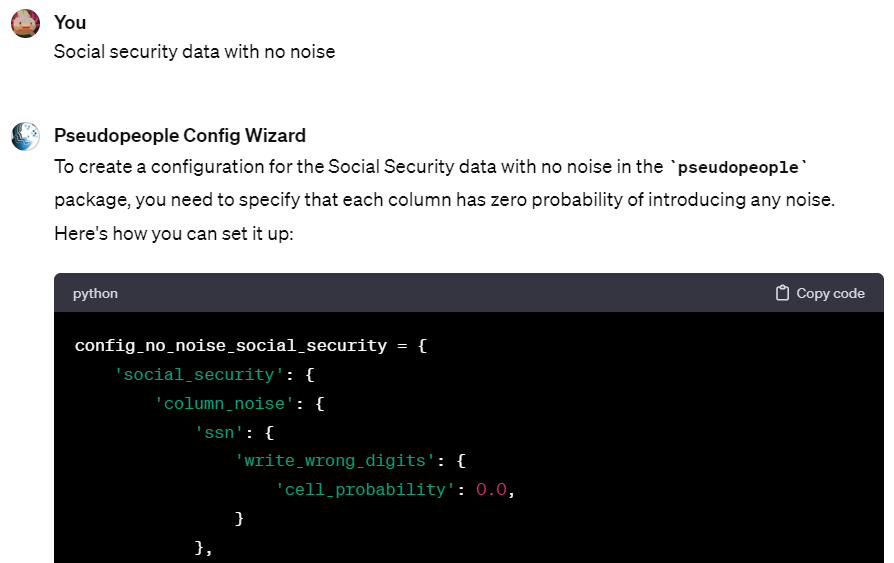Over the last year, I’ve been hard at work making simulated data. I love making simulated data, and I finally put a minimal blog about it up (https://healthyalgorithms.com/2023/11/19/introducing-pseudopeople-simulated-person-data-in-python/)
I have a persistent challenge when I use pseudopeople in my work: configuring the noise requires a deeply nested python dictionary, and I can never remember what goes in it.
After reading a recent dispatch from Simon Willison, I thought that maybe the new “GPTs” affordances from OpenAI could help me deal with this. I’m very optimistic about the potential of AI assistance for data science work.
And with just a short time of messing around, I have something I’m pretty happy with:
https://chat.openai.com/g/g-7e9Dfx1fv-pseudopeople-config-wizard

If you try it out and want to confirm that your custom config works, here is a Google Colab that you can use to test it out: https://colab.research.google.com/drive/1UG38OZigDwBy4zNJHo5fZ752LdalQ7Bw?usp=sharing


